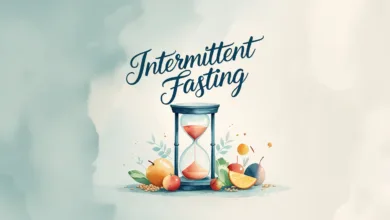High Protein Meal Prep Ideas: Expert Guide to Building Muscle & Losing Fat (2025)

As a weight loss and nutrition specialist, I’ve helped thousands of clients achieve their body composition goals through strategic high protein meal prep ideas. The secret isn’t deprivation—it’s preparation. When you master high protein meal prep, you take control of your nutrition, metabolism, and results.
Protein is your most powerful ally for transforming your physique. It preserves lean muscle during fat loss, accelerates recovery, and keeps hunger at bay for hours. Yet most people struggle with consistency because they lack a system. This comprehensive guide reveals the exact high protein meal prep ideas I use with my clients to create sustainable, delicious meal plans that deliver real results.
Why High Protein Meal Prep Accelerates Fat Loss
From a physiological standpoint, protein offers distinct metabolic advantages. Your body expends approximately 25-30% of protein’s calories during digestion—a phenomenon called the thermic effect of food. Compare this to carbohydrates (5-10%) and fats (0-3%), and you’ll understand why high protein meal prep ideas become crucial for maximizing daily calorie burn.
Protein triggers satiety hormones like peptide YY and GLP-1 while suppressing ghrelin, your hunger hormone. This hormonal response explains why clients following my high protein meal prep ideas report dramatically reduced cravings and better appetite control throughout the day.
Most importantly, adequate protein intake (0.7-1 gram per pound of body weight) protects hard-earned muscle tissue during caloric restriction. When you lose weight without sufficient protein, up to 50% of that weight can come from muscle. With strategic high protein meal prep ideas, you preserve muscle while specifically targeting fat stores.
Essential Equipment for Efficient Meal Prep
Before exploring specific high protein meal prep ideas, ensure you have these tools:
Must-Have Items
- Glass meal prep containers with airtight lids (BPA-free plastic works too)
- Digital food scale for accurate portion control
- Sheet pans for batch cooking multiple proteins simultaneously
- Sharp chef’s knife and cutting board
- Instant Pot or slow cooker for hands-off protein preparation
Game-Changing Additions
- Rice cooker for perfect grains every time
- Food processor for quick vegetable prep
- Vacuum sealer to extend freshness
- Portable cooler bag for transporting meals
Strategic Protein Selection for Maximum Results
The foundation of effective high protein meal prep ideas starts with smart protein choices. I categorize options by cost-efficiency and nutritional density:
Premium Protein Sources
Chicken Breast: 31g protein per 100g, 165 calories
Ideal for high protein low calorie meal prep. Buy in bulk when on sale, portion into 4-6 oz servings, and freeze immediately.
White Fish: 25g protein per 100g, 100 calories
Tilapia, cod, and swai offer exceptional protein-to-calorie ratios. Frozen fillets provide convenience without sacrificing quality.
Greek Yogurt: 10g protein per 100g, 59 calories (non-fat varieties)
Beyond breakfast, use as a sour cream replacement, marinade base, or sauce foundation to boost protein content.
Budget-Friendly Champions
Eggs: 13g protein per 2 large eggs, $0.25 per serving
The most versatile protein for high protein meal prep ideas. Hard-boil a dozen on Sunday for grab-and-go options throughout the week.
Canned Tuna: 25g protein per can, $0.75-1.00 per serving
Mix with Greek yogurt instead of mayo, add to salads, or stuff into bell peppers for quick meals.
Dried Lentils: 18g protein per cooked cup, $0.15 per serving
Plant-based protein that adds fiber and keeps you satisfied. Cook in vegetable broth for enhanced flavor.
Chicken Thighs: 26g protein per 100g, $1.00 per serving
More forgiving than chicken breast, thighs stay moist and flavorful. The slightly higher fat content aids nutrient absorption.
My 3-Hour Sunday Protocol for Weekly Success
This systematic approach to high protein meal prep ideas has helped my clients consistently prepare 15-20 meals in a single session:
Hour One: Protein Preparation
Oven Method: Preheat to 425°F. Season 3 pounds of chicken thighs with salt, pepper, garlic powder, and paprika. Bake for 25-30 minutes until internal temperature reaches 165°F.
Stovetop Method: While chicken bakes, bring a large pot of water to boil. Add 12 eggs, return to boil, then remove from heat. Cover and let stand 11 minutes. Transfer to ice bath immediately.
Slow Cooker Method: Combine 2 cups dried lentils with 6 cups vegetable broth, bay leaves, and cumin. Cook on low for 6 hours. Season after cooking to prevent tough skins.
Hour Two: Vegetable Assembly
Roast a large sheet pan of mixed vegetables: broccoli florets, bell pepper strips, zucchini chunks, and sweet potato cubes. Toss with olive oil spray, salt, and Italian seasoning. Roast at 425°F for 20-25 minutes.
While vegetables roast, prep raw options: wash and portion carrots, celery, cucumber, and cherry tomatoes into individual containers with pre-measured hummus portions.
Hour Three: Assembly and Storage
Divide proteins into 4-6 oz portions across containers. Add roasted vegetables, then top with your chosen complex carbohydrate (quinoa, brown rice, or sweet potato). Label each container with the date and contents.
Store meals you’ll eat within three days in the refrigerator. Freeze the remainder, removing one container to the fridge each evening for the following day.
High Protein Low Calorie Meal Prep Strategies
For clients focused on fat loss, I emphasize high protein meal prep ideas that maximize satiety while controlling calories:
Volume-Based Approach
Fill half your container with non-starchy vegetables (broccoli, cauliflower, zucchini, leafy greens). These provide bulk and nutrients with minimal calories. Add 4-6 oz lean protein (chicken breast, white fish, or shrimp), then finish with a small portion of complex carbohydrates.
Calorie-Controlled Combinations
Breakfast Option: Egg white scramble (3 whites + 1 whole egg) with spinach, mushrooms, and tomatoes. Serve with 1/2 cup oatmeal. Total: 350 calories, 35g protein
Lunch Option: Grilled chicken breast over cauliflower rice with roasted Brussels sprouts and 1 tbsp tahini dressing. Total: 380 calories, 42g protein
Dinner Option: Baked cod with steamed broccoli, zucchini noodles, and marinara sauce. Total: 320 calories, 38g protein
Protein-Sparing Modified Fast Days
For advanced clients, I occasionally program higher protein, lower carbohydrate days using high protein meal prep ideas that emphasize lean proteins and fibrous vegetables. These strategic days enhance fat mobilization while preserving muscle mass.
Lunch-Specific High Protein Meal Prep Ideas
Creating portable, workplace-friendly meals requires special consideration:
Mason Jar Methodology
Layer ingredients from bottom to top: dressing, sturdy vegetables (carrots, bell peppers), protein (grilled chicken, chickpeas), grains (quinoa, farro), delicate greens (spinach, arugula). When ready to eat, shake and pour into a bowl.
Asian-Inspired Jar: Ginger-soy dressing, edamame, shredded carrots, grilled chicken, brown rice, mixed greens
Mediterranean Jar: Lemon-herb vinaigrette, cucumbers, cherry tomatoes, grilled shrimp, quinoa, arugula
Mexican Jar: Salsa verde, black beans, corn, seasoned ground turkey, cauliflower rice, romaine lettuce
No-Refrigeration Options
Tuna Salad Lettuce Wraps: Mix canned tuna with Greek yogurt, diced celery, and Dijon mustard. Pack separately with romaine leaves. Assemble at lunch.
Protein Smoothie Packs: Combine protein powder, frozen berries, spinach, and chia seeds in individual bags. Store in freezer, grab one in the morning, and blend with almond milk at work.
Greek Yogurt Parfaits: Layer Greek yogurt with nuts, seeds, and a small portion of berries in portable containers. Keeps without refrigeration for 4-5 hours.
Flavor Enhancement Without Calorie Addition
The biggest complaint about high protein meal prep ideas is bland, repetitive flavors. Professional techniques solve this problem:
Zero-Calorie Flavor Boosters
Fresh herbs (cilantro, basil, parsley) added just before eating
Citrus juice and zest (lemon, lime, orange)
Hot sauces and vinegars
Garlic, ginger, and onion powder
Spice blends (everything bagel, taco seasoning, curry powder)
Strategic Marinade Use
Marinate proteins for 4-24 hours before cooking to infuse deep flavor without added cooking time:
Lemon-Herb Marinade: Combine fresh lemon juice, minced garlic, dried oregano, and black pepper. Perfect for chicken and fish.
Asian-Fusion Marinade: Mix low-sodium soy sauce, rice vinegar, fresh ginger, and sesame oil. Excellent with salmon or tofu.
Spicy Southwest Marinade: Blend lime juice, chili powder, cumin, and fresh cilantro. Ideal for chicken or turkey.
Protein-Rich Sauce Recipes
Greek Yogurt Ranch: Combine 1 cup plain Greek yogurt with 1 packet ranch seasoning and 2 tbsp water. Adds 15g protein per 1/2 cup serving.
Peanut Power Sauce: Whisk together 3 tbsp natural peanut butter, 2 tbsp low-sodium soy sauce, 1 tbsp rice vinegar, and sriracha to taste. Provides 8g protein per 1/4 cup.
Advanced High Protein Meal Prep Ideas
Once you’ve mastered foundational techniques, these strategies enhance variety and sustainability:
Protein Rotation System
Prevent taste fatigue by rotating protein sources on a four-week cycle:
Week 1: Chicken-focused (breast, thighs, ground)
Week 2: Seafood emphasis (salmon, shrimp, white fish)
Week 3: Plant-based proteins (lentils, chickpeas, tofu)
Week 4: Mixed sources (turkey, eggs, cottage cheese)
Component-Based Assembly
Rather than preparing complete meals, cook individual components for maximum flexibility:
Batch-Cooked Proteins: Plain grilled chicken, seasoned ground turkey, hard-boiled eggs, baked salmon
Prepared Vegetables: Roasted rainbow vegetables, steamed broccoli, raw vegetable packs
Complex Carbohydrates: Cooked quinoa, brown rice, sweet potatoes, cauliflower rice
Mix and match components daily based on your preferences and schedule. This approach prevents boredom while maintaining nutritional consistency.
Texture Variation Techniques
Combat monotony by varying cooking methods for the same protein:
Chicken Preparation Options:
- Baked with Italian herbs
- Slow-cooked with salsa verde
- Grilled with BBQ dry rub
- Pan-seared with lemon-pepper seasoning
Egg Versatility:
- Hard-boiled for portability
- Scrambled with vegetables
- Baked in muffin tins with turkey and spinach
- Poached for immediate consumption
Troubleshooting Common Challenges
Textural Degradation
Problem: Proteins become dry or rubbery after several days.
Solution: Slightly undercook proteins initially, as they’ll continue cooking during reheating. For chicken, remove from heat at 160°F instead of 165°F. Store with a small amount of liquid (broth or sauce) to maintain moisture.
Flavor Fatigue
Problem: Eating similar meals becomes mentally exhausting.
Solution: Cook proteins plain, then apply different sauces and seasonings each day. Keep 4-5 distinct flavor profiles on hand: Asian-inspired, Mediterranean, Mexican, BBQ, and Italian.
Time Constraints
Problem: Limited time for extensive meal prep sessions.
Solution: Start with partial meal prep—perhaps just proteins and vegetables, adding fresh components daily. Use convenience items strategically: pre-cut vegetables, rotisserie chicken, or microwavable rice packets.
Portion Inconsistency
Problem: Meals vary significantly in protein content, undermining results.
Solution: Invest in a digital food scale and weigh proteins before cooking. Track portions for two weeks to develop accurate visual estimation skills. Remember: a palm-sized portion typically equals 3-4 oz cooked protein.
Your 4-Week Implementation Plan
Week 1: Foundation Building
Prepare 2-3 basic proteins (chicken breast, hard-boiled eggs, ground turkey) with simple seasonings. Focus on establishing the routine rather than variety.
Week 2: Flavor Development
Use the same proteins but experiment with different marinades and seasonings. Discover which flavor combinations you genuinely enjoy.
Week 3: Variety Integration
Introduce one new protein source (fish, lentils, or tofu) alongside proven favorites. Test different vegetables and preparation methods.
Week 4: System Optimization
Create your personalized component-based system. By now, you’ll know your preferred proteins, ideal portion sizes, and most efficient preparation methods.
Sustainable Long-Term Success
The ultimate goal extends beyond temporary meal prep—it’s developing nutritional competence and food preparation skills that serve you for life.
Begin with achievable targets. Preparing lunches for three days surpasses attempting every meal and burning out within two weeks. Gradually expand as your skills and confidence grow.
Maintain flexibility in your approach. Some weeks offer more time and energy than others. Adjust your meal prep scope accordingly rather than abandoning the practice entirely.
Extract lessons from every experience. Each “failed” meal teaches valuable information about your preferences, timing, or technique. Successful fat loss comes from consistent good decisions, not perfection.
Acknowledge incremental progress. Recognize when high protein meal prep ideas save money, support healthier eating patterns, or reduce daily decision fatigue.
The skills you develop—planning, batch cooking, portion control, and flavor building—translate into lifelong competence with food, whether you’re meal prepping weekly or cooking fresh meals daily.
What specific goals are you focusing on with your meal prep—muscle building, fat loss, or general health improvement?







